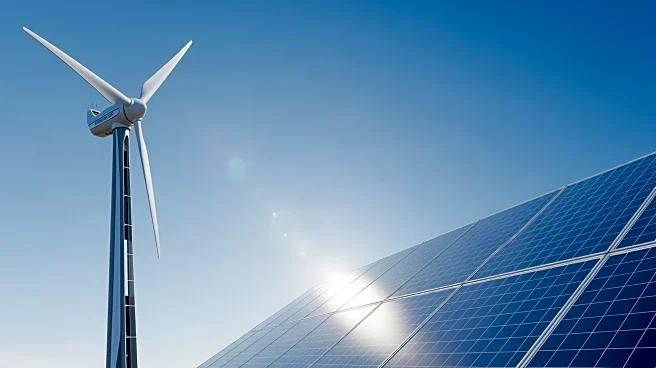What's Happening?
China's CO2 emissions have been flat or falling for 18 months, with the third quarter of 2025 showing no change from the previous year. The adoption of electric vehicles and increased solar and wind power
generation have contributed to this trend. However, the chemical industry's growth has offset reductions in other sectors. China's emissions are finely balanced between a small fall or rise for the year, depending on developments in the final quarter.
Why It's Important?
China's emissions trajectory is crucial for global climate goals, as the country is a major contributor to global CO2 output. The flat emissions trend suggests progress in renewable energy adoption, but the chemical industry's growth poses challenges. China's ability to meet its carbon intensity targets will impact its 2030 climate commitments, requiring steeper reductions in the coming years. The situation highlights the need for continued investment in clean energy and policy adjustments to curb industrial emissions.
What's Next?
China's emissions for the full year of 2025 will depend on the balance between renewable energy growth and industrial emissions. The government may need to implement stricter policies to ensure emissions reductions and meet climate targets. The outcome will influence China's future climate strategies and its role in international climate negotiations. Continued monitoring of sector-specific emissions will be essential to guide policy decisions.
Beyond the Headlines
The emissions trend reflects broader economic and policy dynamics in China, including the balance between industrial growth and environmental sustainability. It raises questions about the effectiveness of current policies and the need for more aggressive measures to achieve climate goals. The situation may prompt discussions on the role of government and industry in driving sustainable development.












